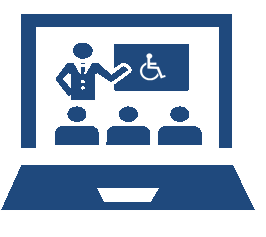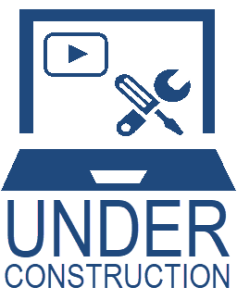Introduction
Rob Power

Welcome
If you are reading this book, then you probably fall into one of three categories:
- You are a participant in one of my instructional design courses.
- You are an instructor looking for a companion resource for an instructional design or educational technology course with a focus on Digital Accessibility and Accessible Learning with Technology.
- You are interested in learning more about Accessible Learning with Technology, and how to design, build, and test your own accessible teaching and learning resources.
In either case, you’ve come to the right place!
Why This Book?
 As you will see in the chapter Why Accessibility Matters, I have a vested interest in accessible learning with technology. As an instructional designer, an instructor of instructional design and educational technology courses, and an educational technology and instructional design researcher, it behooves me to pay close attention to issues that impact full student access to rich learning opportunities. But, I am also a parent to children who have learning disabilities. For several years, I have been seeking ways to increase my knowledge and skills in this area. I have also been sharing evidence-informed tips, tricks, and resources related to digital accessibility through my website and blog at Power Learning Solutions. Over the past couple of years, I have had the opportunity to begin designing and developing some specialized courses on digital accessibility for various Canadian universities. I decided to produce this eBook as a means to curate these resources in one place. But, this is not just a collection of my tips and tricks! I have had the opportunity to collaborate with graduate-level students on the production of several eBooks in recent years. The ALT Text represents my first attempt at collaborating with these scholars on a “living text.” This eBook will feature chapters about digital tools to promote accessibility and to remove barriers to accessible learning written by some of my students across multiple courses. As a “living text,” the roster of chapters will continue to grow after the initial publication date. In the spirit of Universal Design for Learning (ULD) and promoting accessible learning with technology, students will have the opportunity to produce their chapters in a variety of interactive formats (i.e., not just traditional text-centric academic writing). Regardless of the course, each chapter will be peer-reviewed, including an audit of the accessibility of the chapter using rubrics and checklists developed as in-course activities.
As you will see in the chapter Why Accessibility Matters, I have a vested interest in accessible learning with technology. As an instructional designer, an instructor of instructional design and educational technology courses, and an educational technology and instructional design researcher, it behooves me to pay close attention to issues that impact full student access to rich learning opportunities. But, I am also a parent to children who have learning disabilities. For several years, I have been seeking ways to increase my knowledge and skills in this area. I have also been sharing evidence-informed tips, tricks, and resources related to digital accessibility through my website and blog at Power Learning Solutions. Over the past couple of years, I have had the opportunity to begin designing and developing some specialized courses on digital accessibility for various Canadian universities. I decided to produce this eBook as a means to curate these resources in one place. But, this is not just a collection of my tips and tricks! I have had the opportunity to collaborate with graduate-level students on the production of several eBooks in recent years. The ALT Text represents my first attempt at collaborating with these scholars on a “living text.” This eBook will feature chapters about digital tools to promote accessibility and to remove barriers to accessible learning written by some of my students across multiple courses. As a “living text,” the roster of chapters will continue to grow after the initial publication date. In the spirit of Universal Design for Learning (ULD) and promoting accessible learning with technology, students will have the opportunity to produce their chapters in a variety of interactive formats (i.e., not just traditional text-centric academic writing). Regardless of the course, each chapter will be peer-reviewed, including an audit of the accessibility of the chapter using rubrics and checklists developed as in-course activities.
What to Expect
 I have designed the structure of the initial sections of this eBook around the themes explored in my first dedicated accessible learning with technology graduate course:
I have designed the structure of the initial sections of this eBook around the themes explored in my first dedicated accessible learning with technology graduate course:
An Introduction to accessibility in teaching and learning, and the guidelines and regulations that inform accessible instructional design.
- Barriers to accessible learning with technology.
- Accessible instructional design.
- Strategies for meeting basic accessibility standards.
- Analyzing digital learning resources for accessibility.
- A brief overview of some digital tools to support accessibility.
 As I write this introduction, the subsequent sections of this eBook remain open. They’ll include the chapters submitted by my students, with major eBook sections to be determined from the themes of those chapters (and likely to expand and evolve over time!).
As I write this introduction, the subsequent sections of this eBook remain open. They’ll include the chapters submitted by my students, with major eBook sections to be determined from the themes of those chapters (and likely to expand and evolve over time!).
